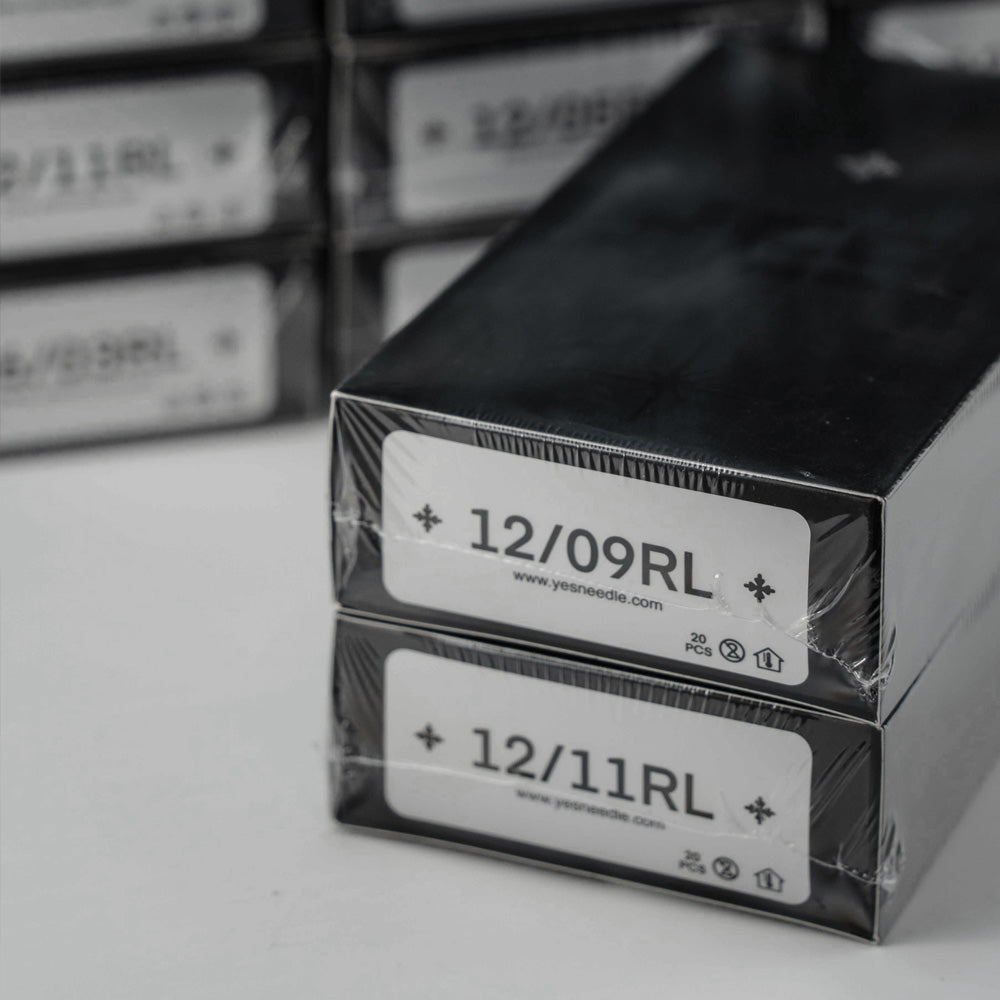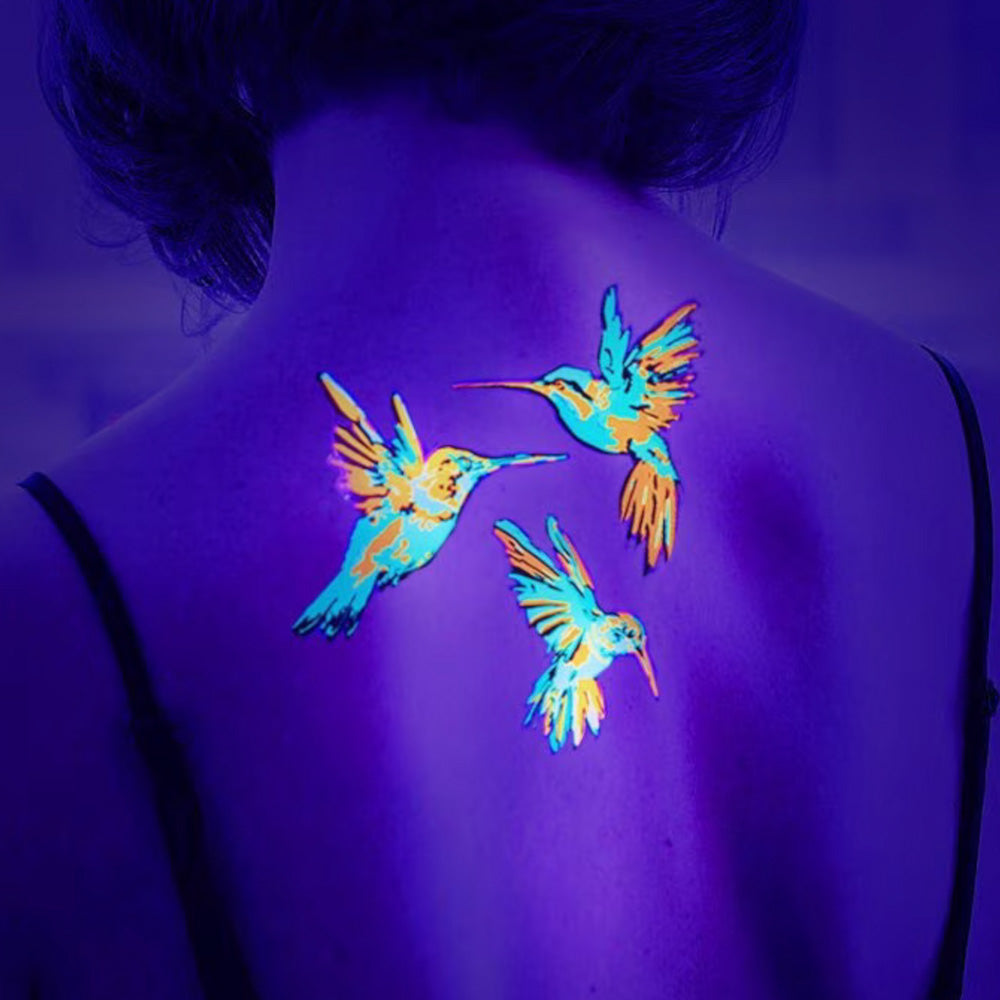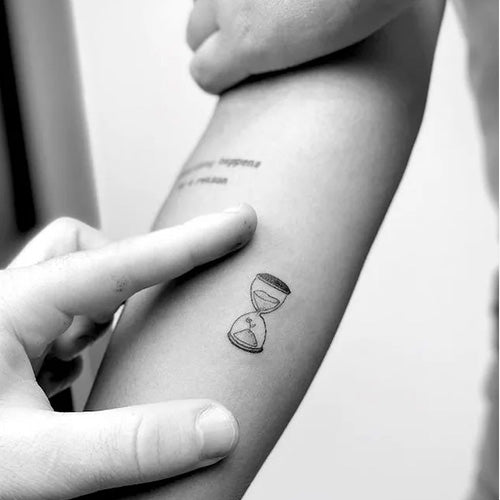How to Become a Tattoo Artist: The Real Path (Not the Instagram Version)
Let me be honest: I almost didn't make it as a tattoo artist.
Not because I couldn't draw or lacked passion. But because I thought tattooing was just about being good at art. It's not. Nobody told me that until I'd already wasted a year chasing the wrong things.
Here's what I wish someone had told me on day one: Becoming a professional tattoo artist takes 3-5 years of dedicated work, costs $2,000-$5,000 in equipment and training, and requires skills that have nothing to do with drawing. But if you're willing to do it right—not the shortcut way flooding Instagram—you can build a career that's creative, lucrative, and sustainable.
I've been tattooing professionally for eight years, mentored three apprentices who are now successful artists, and seen dozens quit because they underestimated what this career demands. This guide is everything I learned the hard way, so you don't have to.
The Brutal Truth About Becoming a Tattoo Artist Today
Before the "how," let's talk about the "should you."
The market is oversaturated. A Reddit tattoo artist nailed it: "We're in the aftermath of a gold rush, with many people not realizing the whole fallacy of a gold rush is that it's already over by the time you've heard of it."
COVID created a tattoo boom. People bought kits online. Instagram made it look easy. Now the market floods with undertrained artists, living room studios, and burned clients.
But here's the opportunity: The oversaturation is mostly at the bottom. Scratchers and side-hustlers who never learned proper technique. The demand for genuinely skilled, professional tattoo artists has never been higher. Clients are desperate for artists who actually know what they're doing.
If you're willing to do this right—invest the time, money, and energy into becoming a real professional—there's absolutely a path forward.
Two Paths: Choose Wisely
❌ The Instagram Path (Dead End):
· Buy Amazon tattoo kit ($150)
· Practice on friends in your kitchen
· Post on Instagram, call yourself "artist"
· Deal with infected tattoos and angry clients
· Never get hired by legitimate studios
✅ The Professional Path (Sustainable Career):
· Spend 6-18 months developing art skills
· Build legitimate portfolio (50-100 designs)
· Find reputable apprenticeship
· Complete 1-3 years supervised training
· Get licensed and certified
· Invest in professional equipment
· Build respected, sustainable career
The first path is faster and cheaper. It's also a dead end. The second is longer and harder. It's also the only path that works long-term.

How Long Does It Really Take?
Realistic timeline: 3-5 years from "I want to tattoo" to "I'm a competent professional."
Year 1: Pre-Apprenticeship
· Building art skills daily (2-3 hours)
· Creating 50-100 portfolio designs
· Studying tattoo styles and techniques
· Researching potential mentors
· Getting rejected 10-50+ times (normal!)
Years 2-3: Apprenticeship
· First 3 months: Cleaning, observing, setup/breakdown
· Months 3-6: Practicing on synthetic skin
· Months 6-12: First supervised tattoos on real people
· Months 12-24: Building skills, developing style
· Months 24-36: Approaching independence
Years 3-5: Establishing Career
· Building client base
· Refining specialty
· Increasing prices as demand grows
· Possibly opening own studio
Fast track (2-3 years) possible if you already have strong art fundamentals, find apprenticeship quickly, work full-time, and get lucky with opportunities.
Slow track (5-7 years) common if apprenticing part-time while working another job, learning complex styles like realism, or in competitive markets.
Bottom line: Anyone promising you can become a professional in 6 months is lying.

The 7 Real Steps to Professional Tattooing
Step 1: Master Drawing Fundamentals (6-12 Months)
You cannot skip this. I've seen people try. They all fail.
As one Reddit artist said: "If your 'portfolio' is just one black and grey drawing and some loose sketches, you don't have a portfolio, you have a sketchbook."
What You Must Learn:
· Clean, confident line quality (tattoos are permanent lines)
· Shading: value, contrast, smooth gradients
· Human and animal anatomy for proper placement
· Composition and how elements work together
· Style versatility: traditional, neo-traditional, black and grey, fine line
Daily Practice: 2-3 hours every day. Study flash sheets from masters. Create 5-10 original designs weekly. Get feedback from artists in online communities.
Resources: Drawing books (Andrew Loomis), YouTube tattoo education channels, community college art classes, online courses (Skillshare, Domestika).

Step 2: Build a Legitimate Portfolio (9-18 Months)
Your portfolio is your resume, interview, and proof of competency combined.
Portfolio Requirements:
· 50-100 completed designs minimum
· Variety of styles (traditional, black and grey, fine line, etc.)
· 10-20 flash sheets of smaller designs
· Larger custom pieces showing creativity
· Clean presentation: physical binder + Instagram
Physical Portfolio: Professional binder with plastic sleeves, high-quality prints (no phone photos), organized by style, only your absolute best work.
Digital Portfolio: Instagram/website with consistent posting (2-3×/week), professional photos, relevant hashtags (#tattooapprentice), process documentation (sketches to final).
Never Include: Unfinished sketches, low-quality photos, traced/copied work, anything you're not proud of.

Step 3: Research and Connect with Studios (Ongoing)
Finding an apprenticeship isn't about walking into a random shop. It's building genuine relationships.
The Right Approach:
· Get tattooed at shops where you want to apprentice
· Support them on social media
· Bring friends to get tattooed there
· Attend shop events and art shows
· Build relationships over 3-6 months before asking
Studio Research Checklist:
✓ Good reputation (Google reviews, community respect)
✓ Licensed with proper health protocols
✓ Quality portfolios from current artists
✓ History of successfully training apprentices
✓ Professional, welcoming atmosphere
Red Flags: Unsanitary conditions, unprofessional artists, excessive fees ($10K+ is suspicious), promises of tattooing within weeks, weak portfolios, high staff turnover.

Step 4: Secure an Apprenticeship (The Hardest Part)
Reality check: You will be rejected repeatedly. One artist was rejected 50+ times before finding their apprenticeship. This is normal.
How to Approach:
1.Visit in person with physical portfolio (call ahead, avoid busy times)
2.Be humble: "I'd love to learn" not "I'm ready to start"
3.Let portfolio speak for itself
4.Ask: "Do you take apprentices? What do you look for?"
5.Follow up professionally and stay in touch
What Studios Want:
· Strong foundational art skills (proven by portfolio)
· Coachable attitude (willing to learn, not know-it-all)
· Work ethic (hustle and dedication)
· Personality fit (40+ hours/week together)
· Commitment (they're investing time in training)
Alternative Paths:
Tattoo Schools: Structured curriculum, faster (6-12 months), but expensive ($5K-$15K) and less respected than traditional apprenticeships.
Mentorship Programs: Some established artists offer paid mentorships with flexible schedules.
Self-Directed (Not Recommended): High risk, requires exceptional discipline, legal/safety issues, much harder to get hired.

Step 5: Complete Your Apprenticeship (12-36 Months)
The Reality (not the Instagram version):
Months 1-3: Grunt Work Cleaning constantly (floors, stations, bathrooms), watching mentor work, setup/breakdown, ordering supplies, answering phones, possibly working another job to pay bills.
Why it matters: You're learning shop flow, hygiene protocols, customer service, proving you're serious.
Months 3-6: Technical Learning Practicing on synthetic skin (hours daily), learning machine setup, understanding needle configurations, studying ink properties and color theory, learning proper depth.
Months 6-12: First Real Tattoos Supervised simple pieces (small lines, basic shading), learning how skin responds differently than practice skin, building confidence, developing steadiness.
Months 12-36: Skill Development Handling more complex pieces, developing personal style, building small client base, working toward independence.

Step 6: Equipment Investment That Actually Matters
This is where most apprentices make a huge mistake: buying cheap equipment to "save money."
The problem: Cheap equipment teaches bad technique.
When I was an apprentice, I bought economy needles for $0.50 each. They were inconsistent—some penetrated too deep, others too shallow. I learned to compensate: pressing harder, adjusting angles constantly, second-guessing every line. When I upgraded to professional needles, I had to relearn everything. The muscle memory was wrong. It set me back months.
The Equipment Decision
Economy Gear ($200-300):
· Cheap machine, economy needles ($0.50-$1 each), basic power supply
· Actual cost: Learning incorrect technique, inconsistent results, mentor frustration, 6-12 months relearning, possible client trauma
Professional Starter Kit ($400-600):
· Quality rotary pen machine ($150-200)
· Professional needle cartridges:
oYesneedle 1205RL ×20 (workhorse liner)
oYesneedle 1207RL ×10 (bold lines)
oYesneedle 1205RS ×10 (soft shading)
oYesneedle 1203RL ×5 (fine detail)
· Reliable power supply ($80-100)
· Professional ink starter set ($60-80)
Why I recommend Yesneedle to every apprentice:
Precision manufacturing = consistent results. Every needle perfectly aligned. You learn proper technique, not compensating for bad equipment. Your mentor can actually help because variables are controlled.
Clear housing = visual learning. Watch ink flow in real-time. Spot issues before they become problems. Understand what's happening beneath the skin surface.
Professional reliability = confidence. When you're nervous tattooing your first client, equipment failure is the last thing you need. Professional-grade cartridges work predictably every time.
The cost difference: $1 more per needle. That dollar buys consistency that saves you months of frustration and relearning.
I wish someone had told me this as an apprentice: Buy professional equipment from day one. The money you "save" on cheap gear costs you time, technique, and confidence. Professional tools aren't luxury—they're foundation.
Step 7: Get Licensed and Certified
Requirements vary by location but typically include:
Bloodborne Pathogens Certification:
· Required in most states/countries
· Learn infection control, safety protocols
· Usually 4-8 hour course, ~$50-150
· Renewal every 1-2 years
State/Local Licensing:
· Application process varies by location
· May require apprenticeship completion proof
· Health and safety inspections
· Fees typically $100-500
CPR/First Aid Certification:
· Often required or strongly recommended
· Useful for medical emergencies
· ~$50-100, renewal every 2 years
Research your local requirements early. Some areas require certifications before you can even start apprenticing.

Common Questions: Age, Education, and Career Change
"Am I too old to become a tattoo artist?"
Short answer: No.
I started at 24. One of the best artists I know started at 35. Another successful artist in my city started at 42 after a corporate career.
What matters more than age:
· Physical stamina (tattooing is physically demanding)
· Financial runway (can you afford 1-3 years of low/no income?)
· Willingness to start at the bottom (cleaning floors in your 30s/40s)
· Learning adaptability (older sometimes means more stubborn)
Advantages of starting older: Life experience, better customer service, financial stability, maturity, more likely to commit seriously.
Challenges: Physical demands increase with age, less time to build career, may have family obligations, ego management (being the "old apprentice").
"Do I need formal art education?"
Short answer: No, but it helps.
What you actually need:
· Strong foundational art skills (doesn't matter how you got them)
· Impressive portfolio (proves your skills)
· Ability to learn and take feedback
Formal education advantages: Structured learning, technique foundation, credibility, networking, access to resources.
Self-taught advantages: Lower cost, flexible pace, focus on tattoo-specific skills, often more motivated.Many successful tattoo artists are self-taught.
Many have art degrees. What matters is skill level and portfolio quality, not the path you took to get there.
"Can I realistically make a living?"
Yes, but income varies dramatically:
Apprentice (Years 1-2): $0-$20K/year (often need second job)
Junior Artist (Years 2-3): $25K-$40K/year (building client base)
Established Artist (Years 4-7): $40K-$80K/year (steady clients, specialization)
Successful Artist (Years 7+): $60K-$150K+/year (reputation, waiting list, higher prices)
Top-Tier Artists: $150K-$500K+/year (rare, requires exceptional talent, business skills, years of reputation)
Factors affecting income: Location (cities pay more), specialization (realism commands higher prices), business skills (marketing, customer service), reputation, speed and efficiency.
Final Thoughts: Is This Path For You?
Becoming a tattoo artist isn't for everyone. Here's how to know if you should pursue this:
You should pursue tattooing if:
· You're genuinely passionate about the art form (not just the aesthetic)
· You're willing to commit 3-5 years to proper training
· You can handle rejection and criticism
· You have patience for years of grunt work
· You're okay with physical discomfort (tattooing is hard on your body)
· You can manage irregular income for years
· You genuinely want to create permanent art on people
You should reconsider if:
· You want quick money (there are faster ways)
· You can't handle criticism (your ego will get demolished)
· You're not willing to do apprenticeship grunt work
· You lack discipline for daily practice
· You can't financially afford 1-3 years of minimal income
· You just like the "cool factor" or aesthetic
Le bilan
The path to becoming a professional tattoo artist is long, difficult, and unglamorous. You'll clean toilets, get rejected constantly, practice thousands of hours on fake skin, invest thousands of dollars in equipment and training, and work years before you make decent money.
But if you do it right—build real skills, find good mentors, invest in professional equipment, commit to the craft—you can build a sustainable career doing creative work you love.
Every tattoo you do right becomes a permanent piece of art someone carries for life. That weight—that responsibility—never gets old. Neither does the satisfaction of creating something beautiful that lasts.
If you're willing to do the real work, not the shortcut version, there's still absolutely room for you in this industry.
Start drawing today. Build that portfolio. Find your mentor. Invest in professional equipment. Put in the years.The industry needs more artists who actually give a damn about doing it right.




